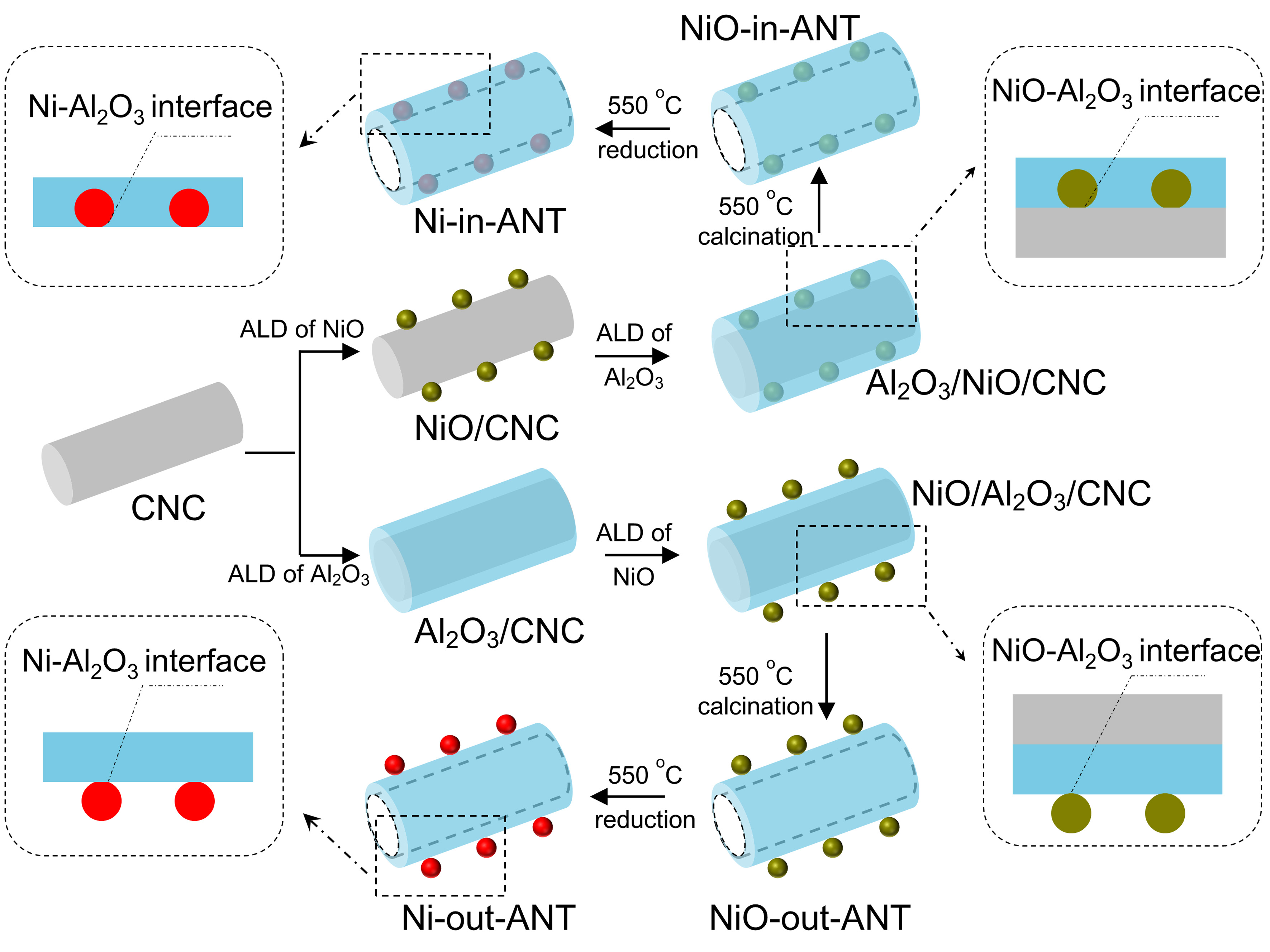About
News and Events
Beamlines
- User Facilities
- Beamlines Directory
- BL08U1-A
- BL08U1-B
- BL09U
- BL13W1
- BL14W1
- BL14B1
- BL15U1
- BL16B1
- BL17U1
- BL01B1
- BL17B1
- BL18U1
- BL19U1
- BL19U2
Technology
- Accelerator Physics
- Accelerator Operations
- Radio Frequency
- Beam Instrumentation
- Control Systems
- Electronics & Detector
- Mechanical Engineering
- Vacuum
- Magnets
- Magnet Power Supplies
- Pulse Technique
- Cryogenics
- Front Ends
- Optics
User Information
Science and Publications
Multiply Confined Nickel Nanocatalysts Produced by Atomic Layer Deposition for Hydrogenation Reactions
01-09-2015
To design highly efficient catalysts, new concepts for optimizing the metal–support interactions are desirable. Here we introduce a facile and general template approach assisted by atomic layer deposition (ALD), to fabricate a multiply confined Ni-based nanocatalyst. The Ni nanoparticles are not only confined in Al2O3 nanotubes, but also embedded in the cavities of Al2O3 interior wall. The cavities create more Ni–Al2O3 interfacial sites, which facilitate hydrogenation reactions. The nanotubes inhibit the leaching and detachment of Ni nanoparticles. Compared with the Ni-based catalyst supported on the outer surface of Al2O3 nanotubes, the multiply confined catalyst shows a striking improvement of catalytic activity and stability in hydrogenation reactions. Our ALD -assisted template method is general and can be extended for other multiply confined nanoreactors, which may have potential applications in many heterogeneous reactions.The research was conducted at the SSRF beamline 14W1.

Preparation process of catalysts
Links: Angew. Chem. Int. Ed., 2015, 54, 9006-9010


 Copyright©2006.12 Shanghai Advanced Research Institute.
Copyright©2006.12 Shanghai Advanced Research Institute.